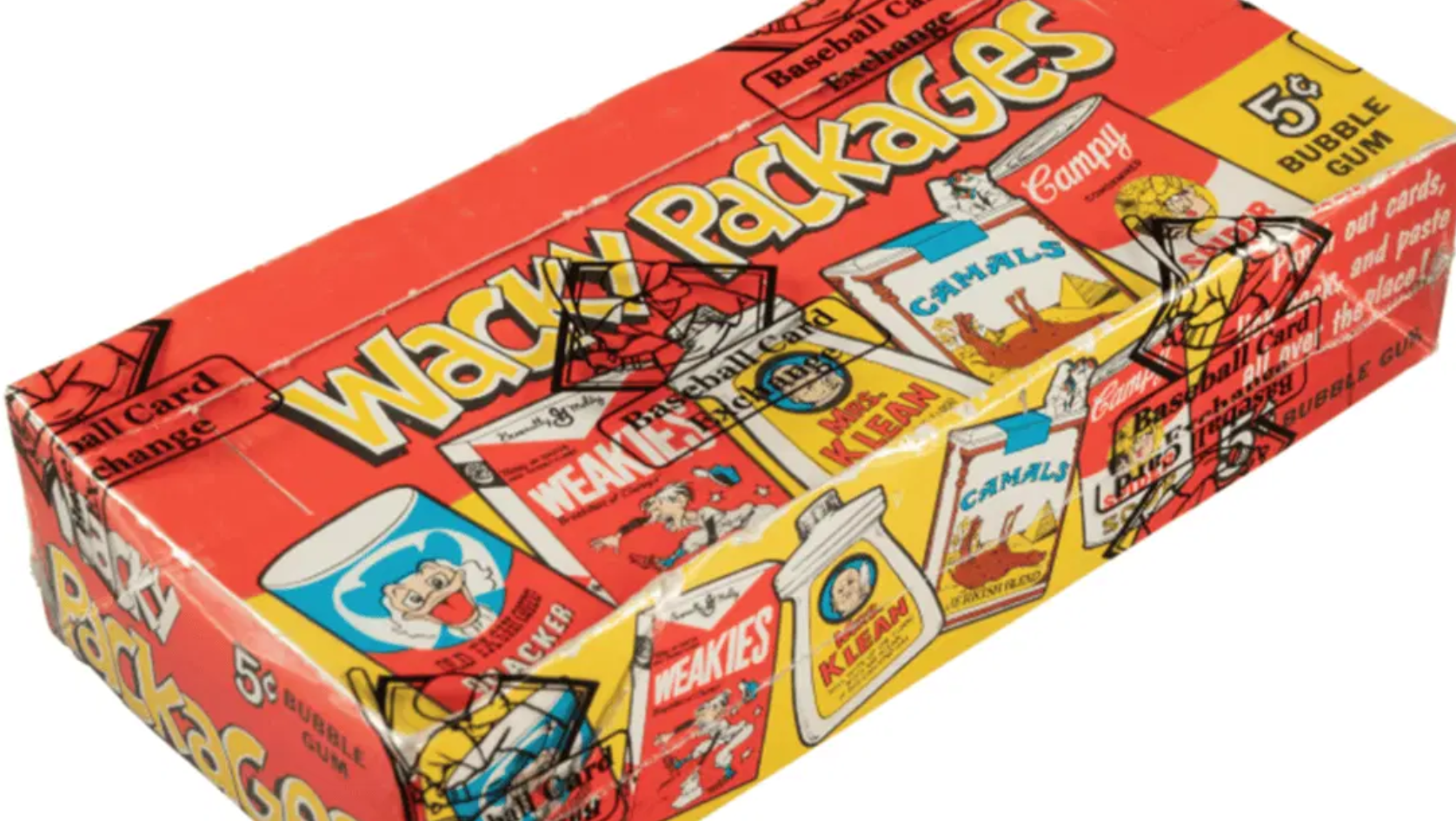In a dazzling display of nostalgia and collector’s fervor, a box of 1967 Wacky Packages recently netted a jaw-dropping $79,300 at a Heritage Auctions event, setting a new world record for the beloved series. This impressive sale didn’t just outshine the previous high-water mark of $63,084 set in 2022; it spotlighted a resurging enthusiasm for these quirky, tongue-in-cheek gems from Topps, the legendary trading card company.
The origins of Wacky Packages date back to 1967 when Topps, already a giant in the world of baseball cards, decided to venture into the realm of parody. The concept was as simple as it was groundbreaking: take familiar grocery brands and reimagine them with mischievous twists. Ritz became “Ratz Crackers,” 7-Up was humorously dubbed “7-Down,” and the list goes on. These playful caricatures, complemented by the vibrant and whimsical artwork, caught the attention of kids and young collectors, creating an instant hit.
One of the lesser-known facts that has added to the charm and value of these collectibles is the involvement of Art Spiegelman, who provided early concept art. Spiegelman would later gain immense recognition for his Pulitzer Prize-winning graphic novel Maus. Coincidentally, his work on Wacky Packages foreshadowed his knack for combining art with social commentary, albeit in a far more light-hearted arena.
But as with any groundbreaking venture, the journey of Wacky Packages wasn’t without its hiccups. The playful jabs at household names didn’t amuse the parodied companies. Brands like Ritz, Jolly Green Giant, and Morton Salt, among others, raised legal objections, threatening to put a damper on the fun. In a strategic move, Topps decided to modify and expand the original set from 44 to 56 cards, swapping out contentious cards for new content and effectively sidestepping backlash.
This minor legal tempest did little to curb the popularity of Wacky Packages. If anything, it boosted their mystique. By 1969, Topps expanded with “Wacky Ads,” and 1973 saw a triumphant return with peel-and-stick stickers—a seemingly minor innovation that catapulted their popularity to rival that of Topps’ own baseball cards, stealing hearts in schoolyards nationwide.
Despite taking a hiatus between 1992 and 2004, the series has transcended mere childhood fancy to claim a spot in the annals of pop culture. Original Wacky Packages and their multiple successors have continued to capture the imagination of collectors, nostalgists, and new generations alike, drawing upon an ever-expanding cult following and renewed interest.
The record-breaking sale of this particular box is more than just about its contents; it’s about the era it represents—a time when poking fun at consumer culture was not just permissible but celebrated. The price fetched at the auction is a testament to how items laden with nostalgia, quirky history, and pop culture significance can transcend their initial purpose to become valuable collectible artifacts.
This sale also reaffirms the growing appetite among collectors for vintage non-sports cards and unopened sets. The cultural significance imbued in these pieces, tied with scarce availability, fuels their soaring market values. Indeed, nothing stirs the imagination and wallets quite like a journey back in time—particularly when that journey involves sticky, absurdly witty stickers.
And this isn’t an isolated case. The market for classic collectibles, especially those with a pop culture connection, is simmering. Items that weave nostalgia with rarity are fetching top dollar—figures that might have seemed implausible just a few short years ago. As collectors and investors parse through attic finds and lofted childhood treasures, the allure of snagging a piece of history becomes ever more irresistible.
So, while Wacky Packages may have started as a playful nod to the consumer world, they’ve evolved far beyond mere stickers. They are collectible pieces of art and whimsy with significant cultural footprints—a bridge to the memory lanes of those who once guffawed at “Liptorn Tea” or “Crust Toothpaste.” With every auction pushing new records, it’s clear this charming corner of collectible culture isn’t just an artifact; it’s an enduring testament to the playful, irreverent spirit that first captured imaginations over five decades ago.

